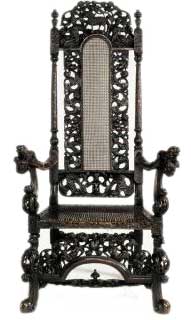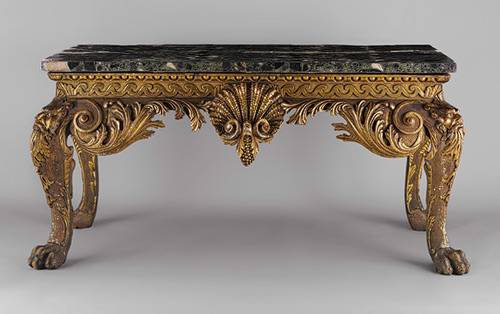Knowledge Center
Related Articles: History of British Furniture Styles
Baroque (1685-1725)
Palladiansim (1715-1760)
Baroque (1685 - 1725):
The exuberant Baroque style originated in Italy and influenced the entire continent. It was characterized by a sense of drama and a love of the ornate. Objects were decorated with a profusion of plant life. Chubby infants, "putti", cavorting around scrolling foliage and garlands of flowers were common. The decorative use of monograms, usually people's initials, was another style feature. Heraldic crests were also incorporated into designs as symbols of status and ownership. Seat furniture was richly upholstered and giltwood furniture imitated gold. Marquetry became popular. Furniture remained heavy, but with more carving and fine detail. Locally grown oak was the basic wood for country pieces, but later, was often veneered with English walnut or walnut imported from France or Virginia.

Palladianism (1715 - 1760) & Georgian Era (1714 - 1820):
A reaction against the extravagance of the Baroque style, and a desire to return to the basic principles of classicism, led to this uniquely British style based on the forms and ornaments of ancient Roman buildings, transmitted through the work of the Italian Renaissance architect Andrea Palladio and British architect Inigo Jones. Designs were symmetrical with decorative features, such as columns and pediments, derived from architecture. Terms, bust figures on the top of a pillar, were popular. Masks and shells were common motifs.
Under the reigns of George I, the mid Georgian period was renowned for the fine furniture produced by the country's most talented craftsmen. The late Georgian period is synonymous with neo-classicism.

Source: The V&A Guide to Period Styles by Anna Jackson